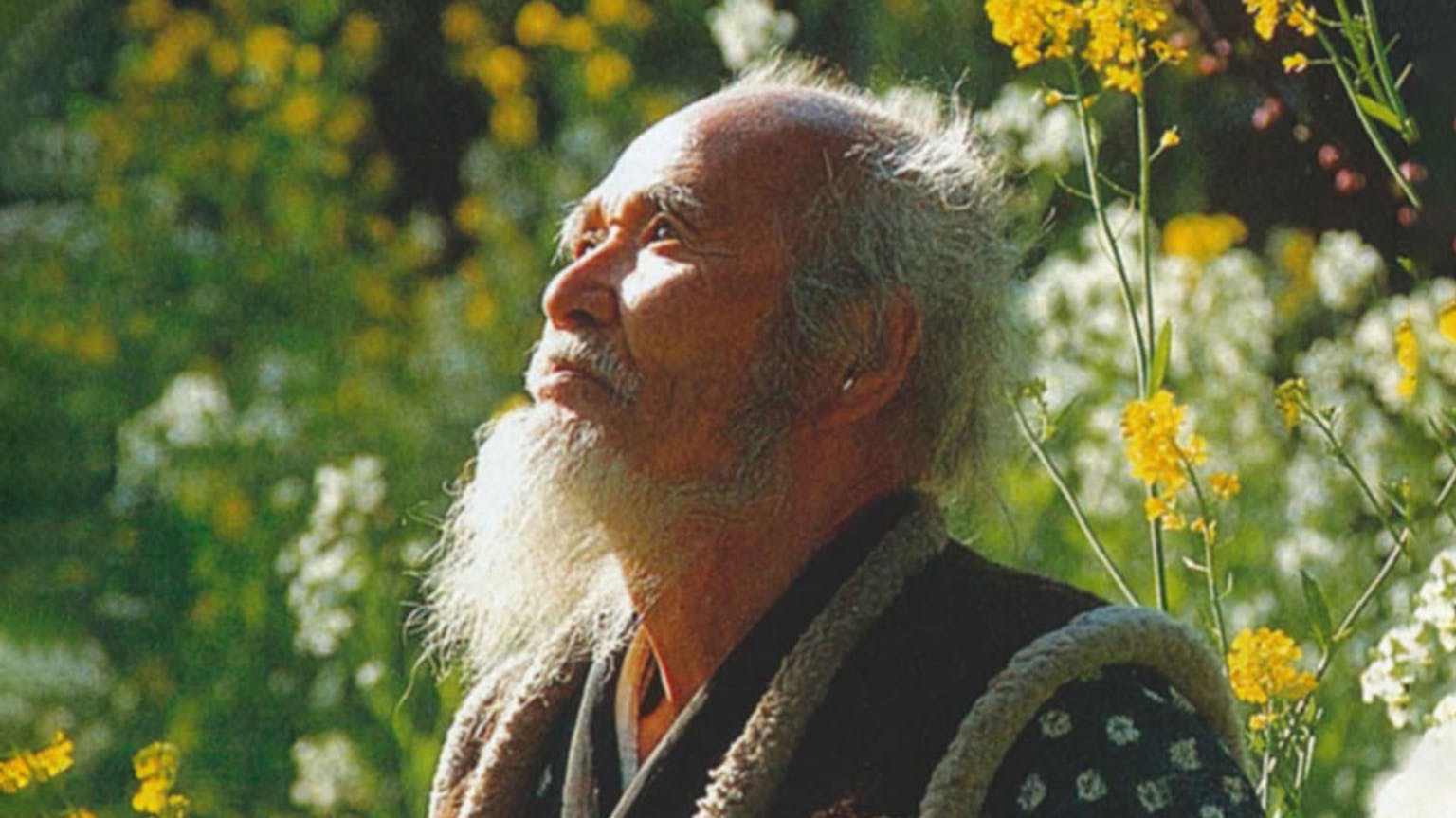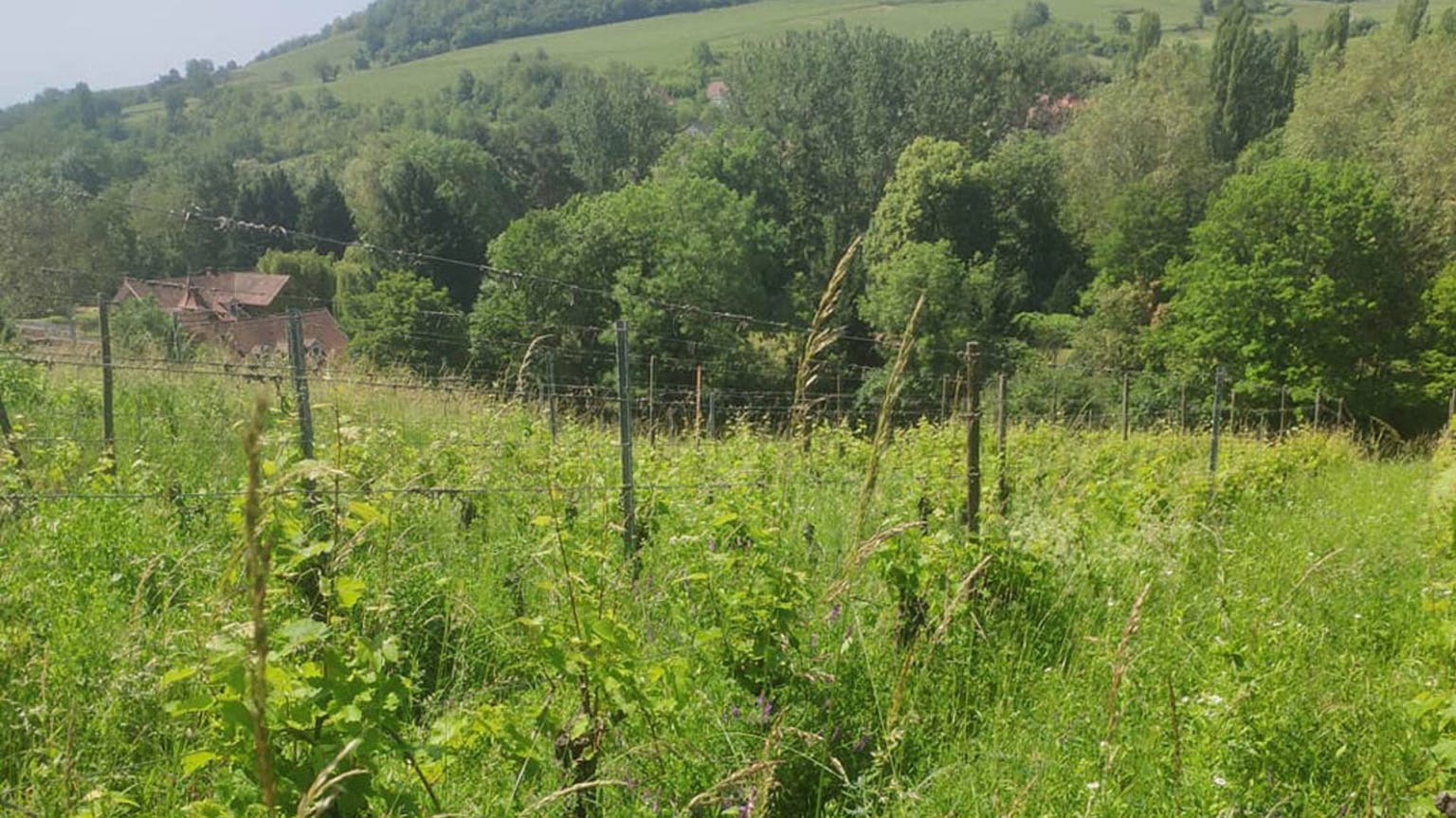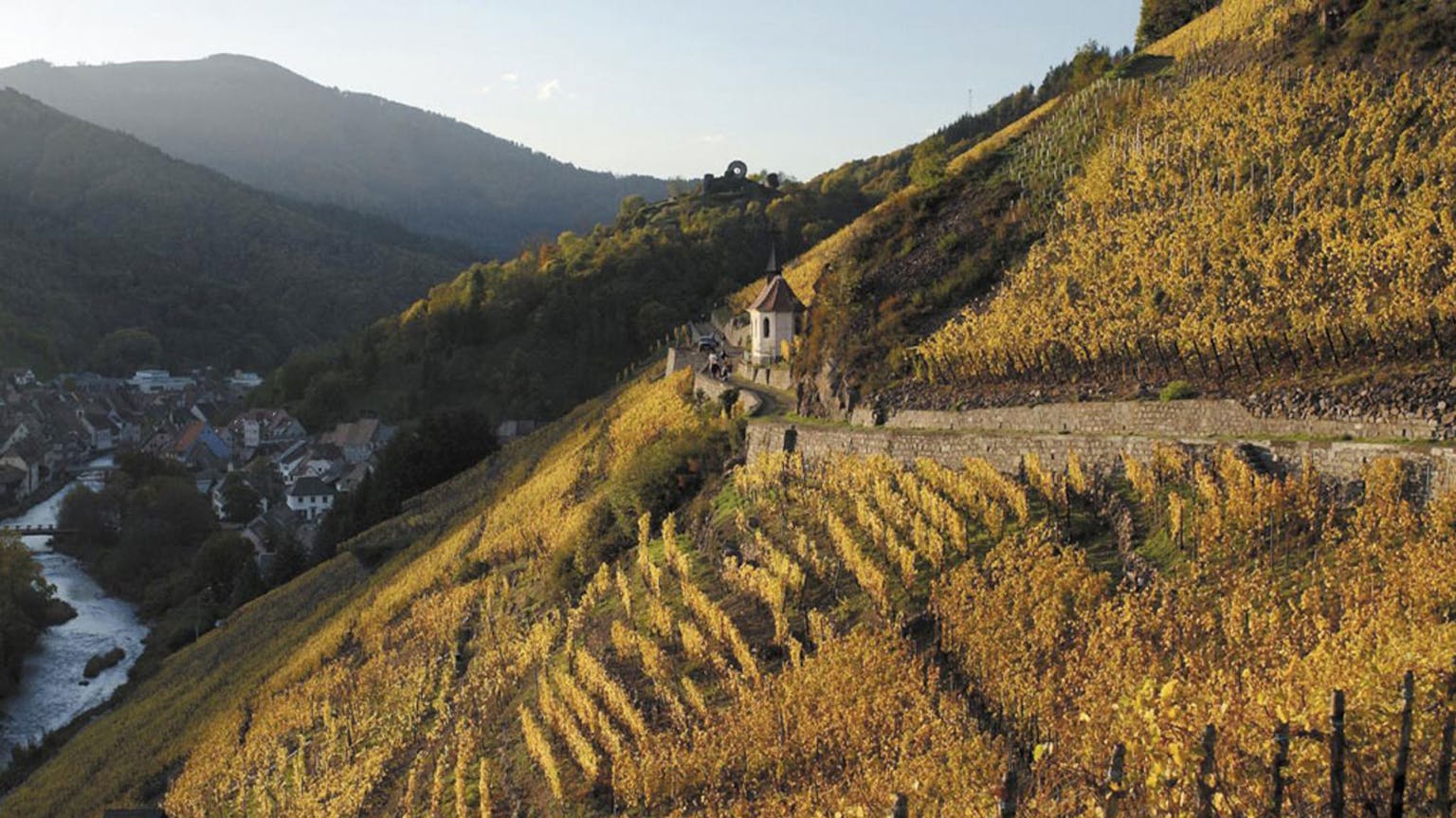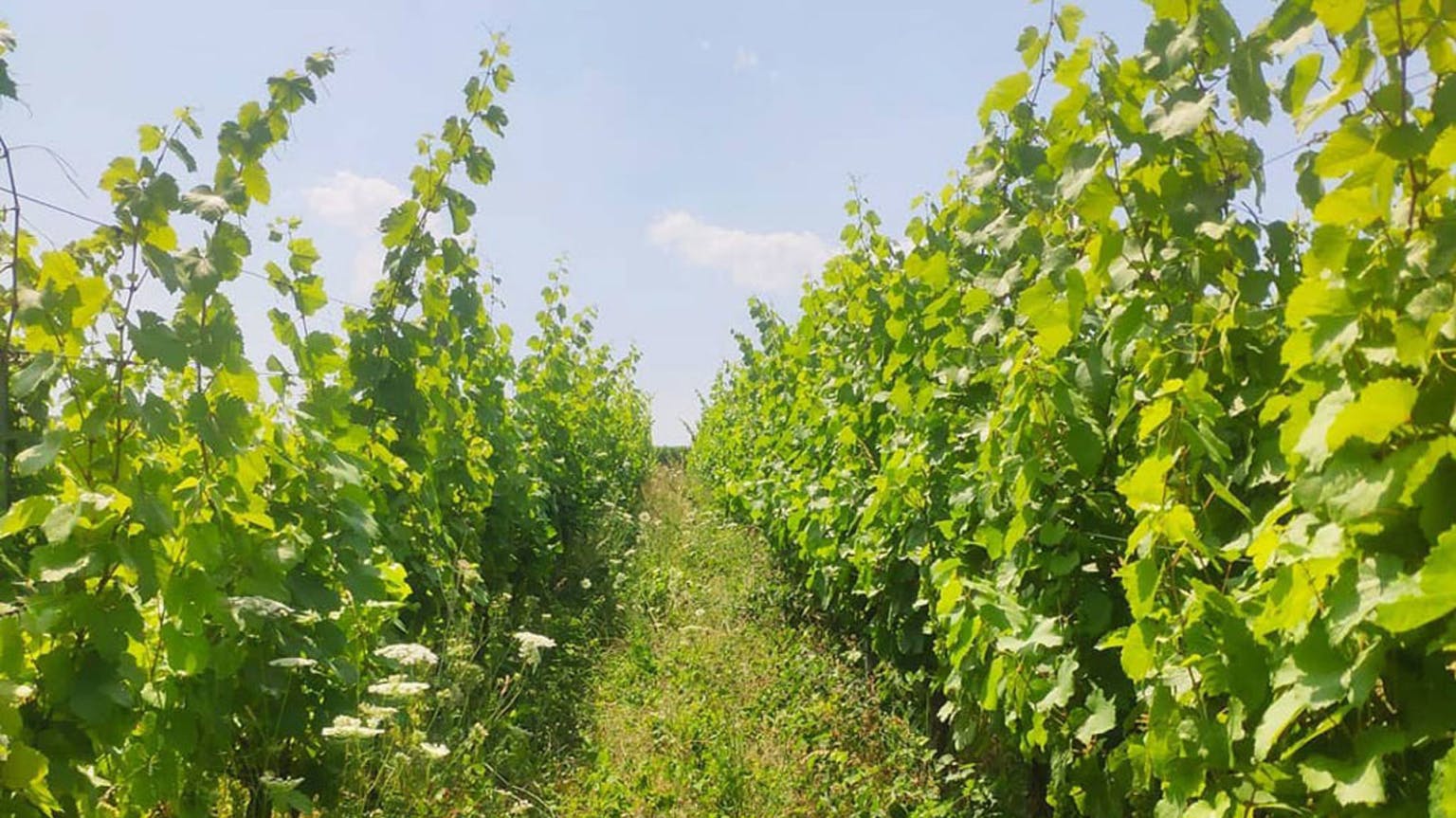In a report published in 2014 by the UN’s Food and Agriculture Organisation, under current rates of degradation, all the world’s topsoil could disappear within 60 years. With 95% of all food produced relying on these living soils, this pronouncement was a stark and terrifying warning of what lies ahead.
Industrial farming and deforestation are the leading causes behind the degradation of soil. Grape growing and large parts of the wine industry remain very much part of that problem. France’s vineyards, as an example, are the country’s biggest consumers of chemical fungicides, insecticides and herbicides. These products can devastate the life in the soil and completely disrupt the biodiversity of a region. Although viticulture represents just 3% of France’s agricultural land, the sector spreads 20% of the country’s fungicides.
Many vignerons have tried to reduce chemical inputs, either using them as a last resort or not at all. Some believe non-chemical additions of copper and sulphur typically used to treat fungal diseases (the biggest threat to yields) are more damaging to the environment than systemic chemical interventions. It is a complex picture.
But there are vignerons committed to non-chemical approaches – growers who believe they can offer alternative methods that are both sustainable for the future and remain commercially viable. While there are various approaches, they all share the belief that protecting the health of the soil is fundamental to their vineyard’s long-term future, as well producing a farming system that is not only sustainable but regenerative, in that it sequesters more carbon dioxide in the soil than it takes out. Exactly how this is practised remains a contentious debate.
Many of these growers are certified organic, many are not – certification itself is another controversial issue. Biodynamic farming is organic farming with a more holistic approach, trying to recreate a natural balancing ecosystem that allows nature to restore and rejuvenate itself, in rhythm with the lunar cycle. Others have gone even further and have allowed their vineyards to grow wild, believing that an undisturbed vineyard is the most sustainable and ecologically healthy. Organic and biodynamic farming practices are essentially a return to conventional farming methods carried out prior to the introduction of chemical farming 70 years ago. The more non-interventionist approach goes one step further, attempting to recreate an environment that pre-dates all commercial farming. It is an approach in which crops and other plant life coexist together, allowing the environment to dictate what grows where. Under the teachings of Masanobu Fukuoka, it was coined “natural farming”.
Masanobu Fukuoka was a Japanese microbiologist and agricultural scientist who studied plant pathology. After nearly dying during a bout of pneumonia, he experienced what he described as a profound spiritual experience – leading him to begin to doubt modern agricultural science. He gave up his scientific post and returned to his family’s farm on the southern Japanese island of Shikoku. It was here that he developed his own non-intervention farming techniques, which involved no tilling or ploughing, and no fertilisation of the land. This was to protect the vital microorganic life in the soil, that he believed was essential to creating an ecologically balanced environment. The publication of his seminal book, The One-Straw Revolution, in 1975, went on to influence the permaculture movement (no till, no ploughing) in the west, and even more radical concepts.

Alsace-based viticulturist Bruno Schloegel (of Domaine Lissner) is one such radical. He has a nine-hectare estate that, over the last 20 years, he has adapted to what he calls the “savage” approach to viticulture. For him, “savage” is a more accurate translation of Fukuoka’s methods.
“I asked my Japanese friends to translate Fukuoka’s Japanese term,” says Schloegel, “and it translates as something between being free and alive. But not just the vines, the whole system of animals, insects, fungus. The key is not to disturb, as this will weaken the system.” For Schloegel it is a better translation than “natural” which today, he believes, no longer means anything.
Despite adopting Fukuoka’s ideas, Schloegel was in fact practising the same approach before he was even aware of the Japanese farmer’s book. “I never knew about Fukuoka until a few years ago. I was given his book and it was amazing. Almost every page, we were totally linked.” Both former scientists, Schloegel too became frustrated by the scientific data available. “It is more complex than the techniques we have been taught,” he says. “Even when I was a student, I thought this. I am a scientist as he was. I studied in the ’70s. He studied in the ’60s. But our conclusions are the same. The answer is to not disturb.”
Prior to Fukuoka, Schloegel was taken by the work of the eminent English scientist Dennis Noble, a pioneer of systems biology whose publication The Music of Life became a huge influence. Noble uses the analogy of life as many orchestras playing different scales, very small and very big. “Molecules, atoms, landscape, living beings as well as the vine – all are playing together and that is what we call life. We can listen to each scale of this living system, and you will find almost the same music, because it is totally coherent. Each scale is in harmony. It was very inspiring to me,” Schloegel explains.
Like Fukuoka, Schloegel has a strong respect for spirituality as well as science and talks about how the human brain deciphers experiences differently. He uses music as an example, describing how listening to music creates an emotional reaction which the scientific part of your brain can’t explain. “Knowing you only have a small knowledge of this complexity, this complexity of nature, makes you humble. But spiritually you get pleasure from living with this complexity and not trying to control it. It’s just like a wave you are surfing on. This is the pleasure side.”
As well as adopting a no-plough, no-till approach, unlike biodynamic farming, Schloegel does not sow seeds for cover crops, nor use any organic fertiliser, preparations or other inputs. He believes his vines’ roots not only root deeper, but are more resistant to disease and suffer less from stress. He also saves on the costs of such additions. So what does he do? He prunes the vines each year – very late in March/April just prior to the new buds forming – and he mows between the rows just prior to harvest. He does also use copper and sulphur, when necessary, to tackle disease but believes he can phase this out. Beyond that, the vineyard is left to its own devices.
It is hard to keep up with Schloegel sometimes – his concepts are unconventional, but this holistic approach is highly considered. It is completely at odds with the commercial farming approaches and understandably has caused controversy. But he, along with a growing number of viticulturists around the world, is totally committed to the concept that permaculture is essential to the future long-term health of arable land. He believes he can not only produce an economically viable crop (up to 40hl/ha), but he can produce wines with greater complexity and terroir expression.

He believes it takes between seven to 12 years of not disturbing the vineyards for them to find their balance. “At this point you are on the crest of the wave – it is very calm,” he says. But this is a long process and requires a lot of faith to commit to. Even Schloegel admits it gets worse before it gets better, as the vineyard adapts. “When you stop the herbicides, the mowing and the ploughing, you get the bad weeds. But these weeds prepare the soil for the next generation of plants,” he says. Poppies, lilies, thistles, wild orchids then start to appear and then fruit and vegetables and a huge variety of plant life and wild flowers begin to grow. His vineyards today have a huge variety of plant and wildlife species coexisting, with cherry, apricot, fig, almond trees and wild vegetables, flowers, fruits, and aromatic herbs all growing between the vines.
What then happens seems incredible. Schloegel explains, once in equilibrium you see distinct plants continue to grow in the same place each year, depending on the terroir of that part of the vineyard. There is one part of his vineyard where 30 metres of wild strawberries appear every year, growing alongside the vines. In other parts there are leeks, other parts a particular herb. Schloegel outlines that even within a single vineyard, very little is exactly the same. The composition, altitude, slope, geological make-up are all different and, when left to adapt, one vineyard grows multitudes of plant species at different levels of concentration in different parts of the vineyard, depending on what adapts best to that particular spot. This is what Schloegel believes is real terroir in action: “A terroir is a full, complex living system – and a wine of this terroir is a response. In this totally free, rich, complex place. I know it is possible for natural systems to rebuild from themselves. But it cannot be fostered.”
Fukuoka’s farm on the island of Shikoku in southern Japan was a rice and citrus fruit farm and, while he managed to produce commercial yields of both rice and fruits, the transference of his techniques to the vineyard is not quite as straightforward. The concepts are radical and while a few like Schloegel are convinced it’s possible – with his own yields varying from 10-40hl/ha, others remain sceptical.
Schloegel’s Alsatian neighbour Olivier Humbrecht MW (of Domaine Zind-Humbrecht) does not believe a non-interventionist approach is a good idea – nor that it is necessary for making wine a sustainable crop for the future. While Humbrecht accepts there may be many good ideas in terms of regenerative methods that heighten biodiversity and increase the health of the soils, he is sceptical of its long-term future.
Humbrecht’s fundamental criticism is that Schloegel’s approach is not as undisturbed as he claims.“A vine is a cultivated plant,” says Humbrecht. “You are cultivating something, disrupting something natural and making it not natural. It is not natural to plant vines one metre apart on a slope, in poor rocky soil, in a place where it doesn’t rain much. It’s not natural to force it to produce grapes every year. So you have to compensate this with something.” For him, permanent cover leads to soil compaction – with the shallow roots of these plants and the topsoil damaged when working in the vineyard – which has graver long-term effects than tilling or ploughing.
These stresses on the vine, Humbrecht explains, are exactly why we have flavour in our wines. Each of these stresses, whether it be the nutrient stress from poor soils, the water stress from growing on a slope or well-drained soils, or nutrient stress from high density planting – these are all deliberate decisions made by vignerons who, over the last 2,000 years, have discovered the best places to cultivate and stress the plant in order to produce delicious fruit. This fruit is the vine’s attempt to escape, through tempting wildlife to eat it and disperse their seeds somewhere less inhospitable. “France would be a forest if untouched and I’m not sure you would not find one wild vine where we have the top vineyards today,” he says.

Humbrecht remembers discovering the vines on his own Grand Cru vineyard Rangen de Thann. These vines had been abandoned since World War One. When he arrived 60 years later, most of them had disappeared. The vines that did survive and adapted were producing tiny, small clusters of grapes. Humbrecht believes non-intervention farming would have similar results. “If you don’t prune a vine for 10 years you will end of with tiny clusters, producing maybe 2-4hl/ha – a typical commercial yield in the region is closer to 80hl/ha.
Humbrecht’s biggest concern centres around this approach’s commercial viability. And that is important if these methods are to be adopted more globally. If these vineyards’ crops are too small, the vineyard will fail and more likely be bought up by someone else who could return the vineyard to conventional, chemical farming.
While there may be disagreements between Humbrecht’s biodynamic approach and Schloegel’s “savage” approach, the permaculture concept has led others to adapt their practices. Michel Chapoutier has been farming biodynamically for the last 30 years but has more recently adopted permaculture. “How I am managing my soil today is completely the opposite to how I managed them biodynamically 20 years ago,” he tells me. Chapoutier now believes the disturbance of the soil is more damaging than the removal of weeds and therefore has stopped ploughing his vineyards. For Humbrecht, light ploughing and resowing cover crops is a better solution. “There is no technique that is 100% good,” he explains. “You have to weigh up the options. What is better? Let the vine die from the competition of the plants growing in May, or disrupting the microorganisms in the soil by ploughing four inches into the soil (between May and June) – you have to choose. It is always a question of balance.”
Another producer who has gone beyond organics and placed the development of biodiversity and regenerative practices at the heart of their operation is Gaja. The early success of Piedmont as a fine wine region in Italy saw areas such as Barbaresco and Barolo become dominated by vineyards. Forests were felled and biodiversity dropped. Gaja has since incorporated more trees, adopted permaculture methods in the vineyard and today produce their own organic fertiliser in their historic vineyards. The team has also recently purchased new land in Alta-Langhe where they are not just planting vines, but trees too, incorporating the trees and the vines together. “There is a growing sensibility towards the importance of biodiversity,” says Gaia Gaja, “therefore we are fine with sacrificing space suited for vineyards in favour of trees, we believe in the long run this decision will benefit the health of the vineyards.”
Industrial farming is in ecological and financial crisis. More sustainable approaches have to be adopted if we are to survive the next generation, but, so far, those choices come at a cost. For many farmers struggling to make a living, the conventional, chemical farming approach has become the only way to financially survive, taking each year as it comes. These growers can ill afford to think much beyond that, despite the system’s long-term unsustainability. Many feel trapped and find more sustainable approaches economically unviable without better directed government subsidies that promote regenerative farming practices.
Wine is hardly an essential food product, but it is the economic engine for entire communities that rely on it for subsistence. In certain wine regions where there is a reliance on water reserves and chemical inputs, it will have to adapt or die. Minimal intervention viticulture is no doubt a radical option, but truly regenerative viticultural approaches will be necessary in a future where food shortages become more widespread. Chapoutier and Zind-Humbrecht, even Schloegel, albeit blessed with great terroir, are paving the way, proving it is possible to produce wine at good volume, at all price points, with a regenerative approach. It is these pioneers that we must learn from, if we are to have a wine industry at all in 50 years‘ time.
Browse the wines of Domaine Zind-Humbrecht or Michel Chapoutier or read more Editorial

